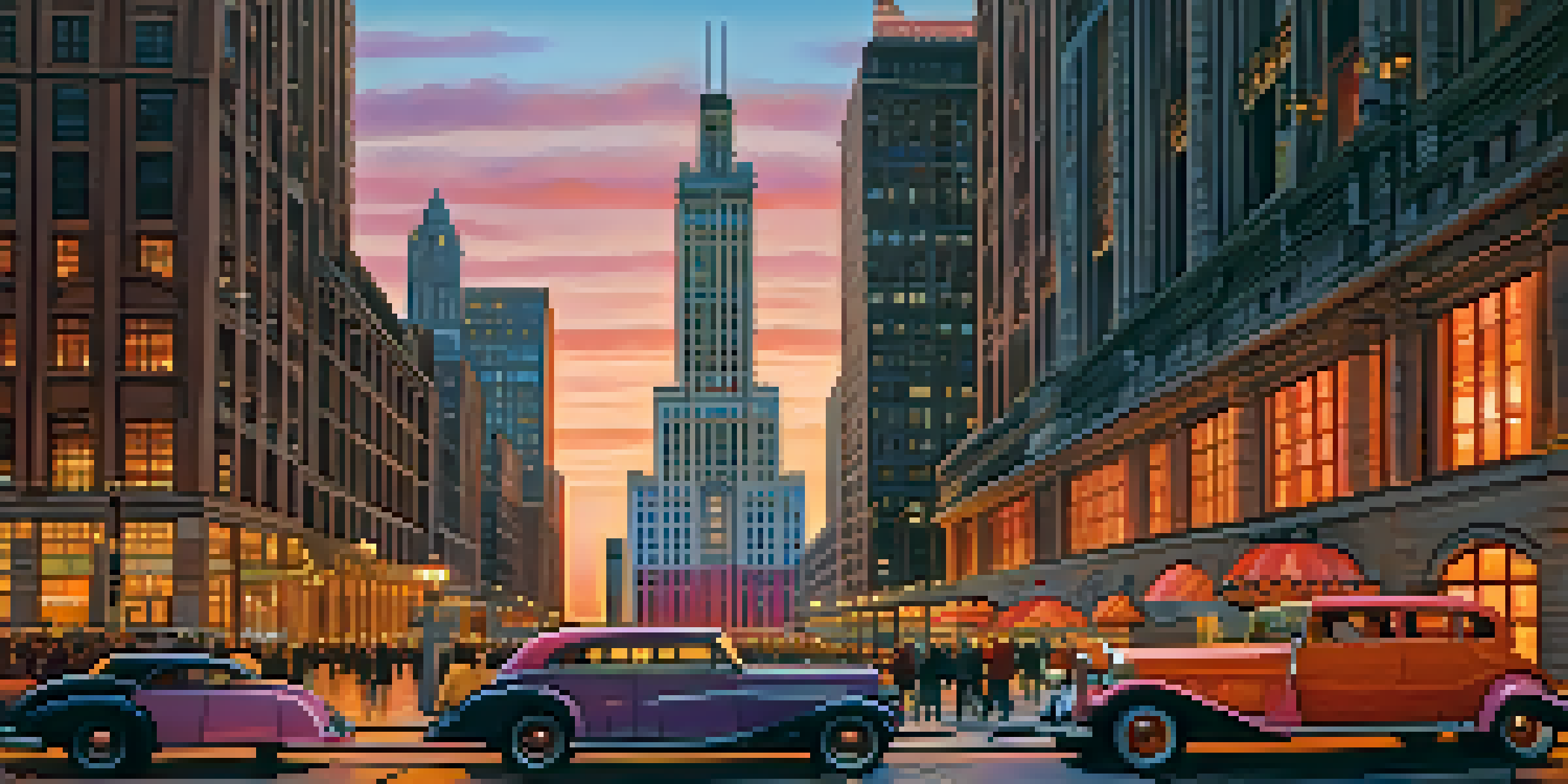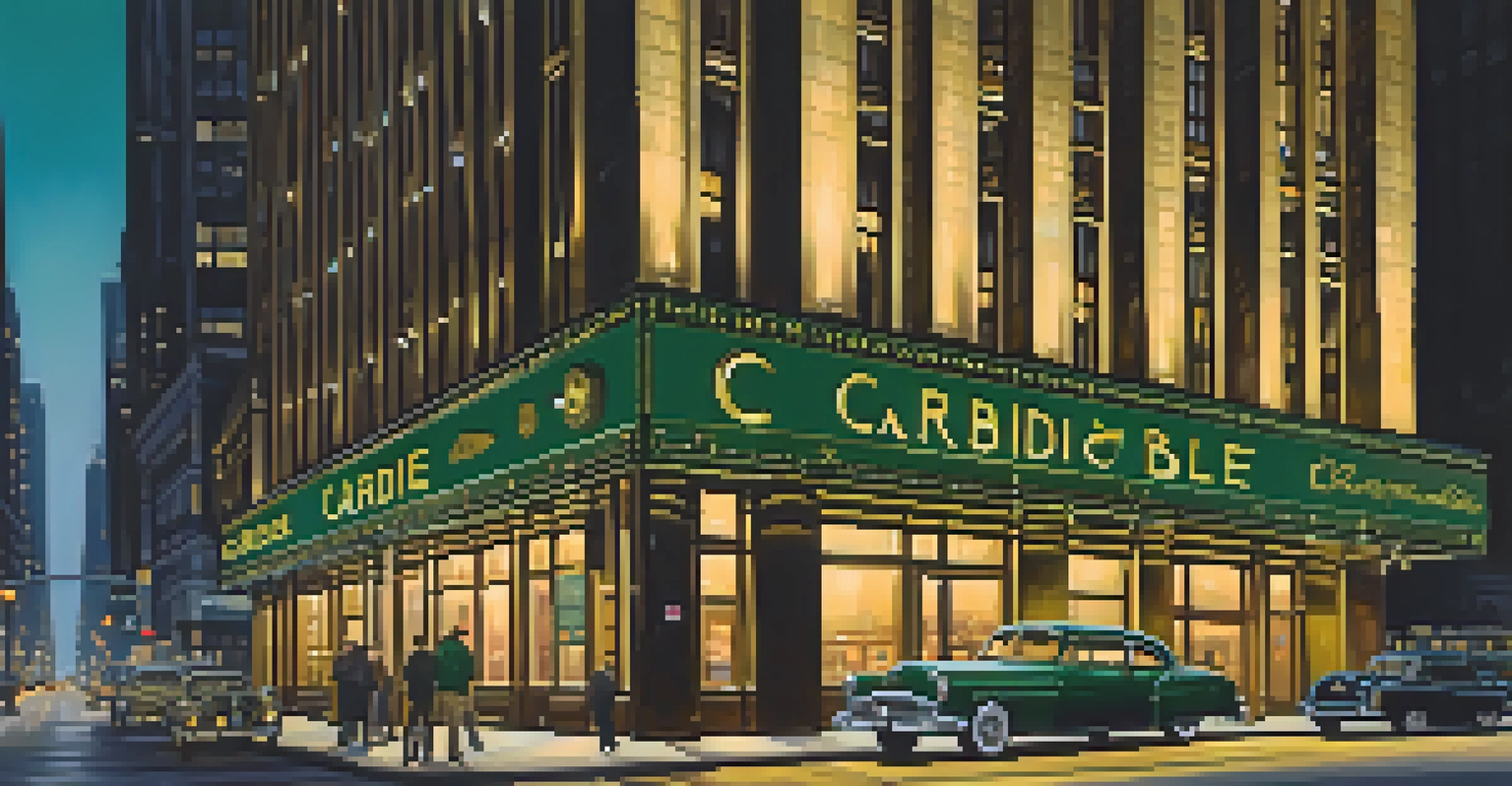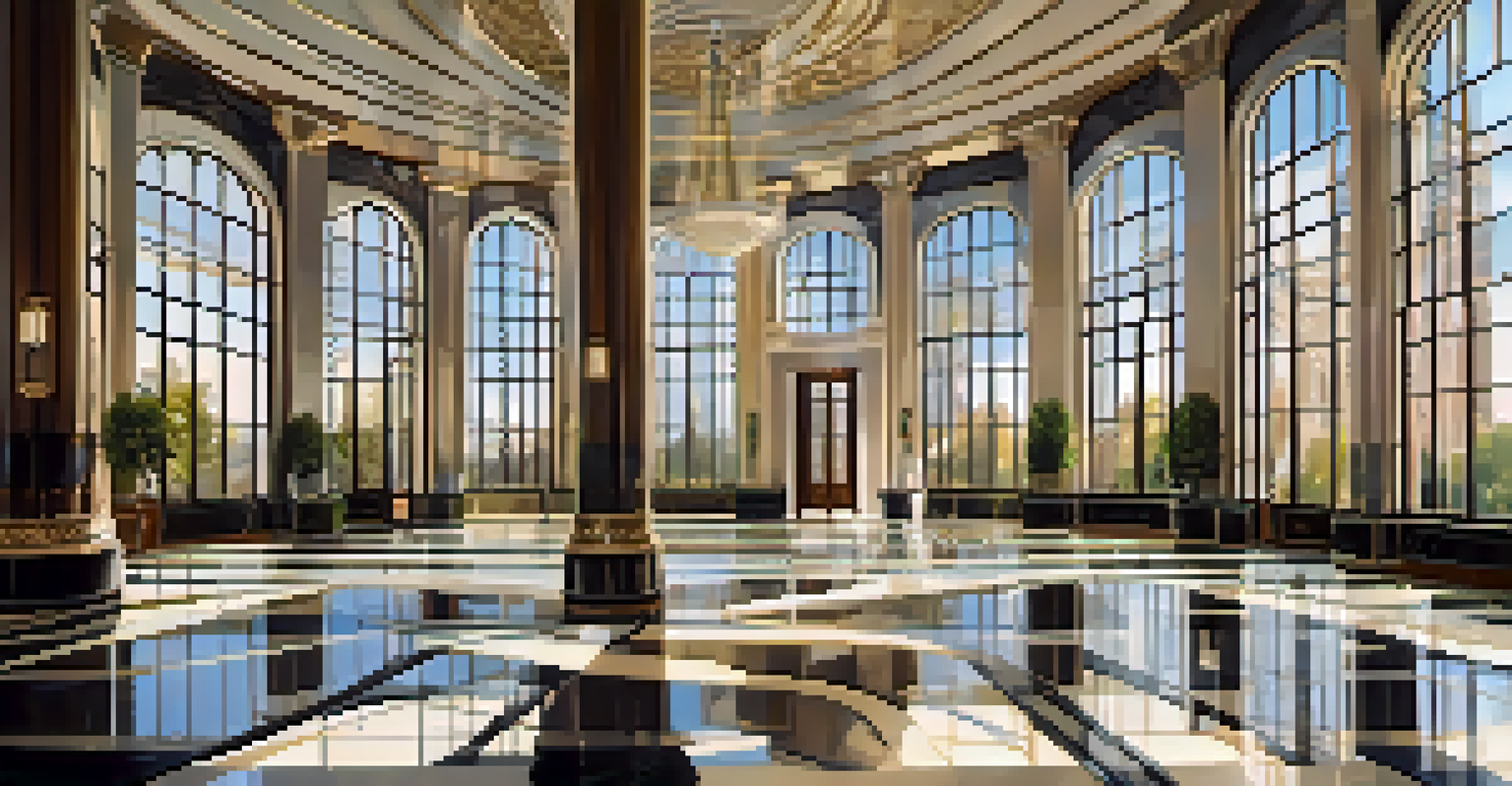Art Deco in Chicago: A Celebration of Elegance and Style

The Origins of Art Deco in Chicago
Art Deco emerged in the early 20th century, a response to the ornate styles of the past. In Chicago, this movement found fertile ground, particularly during the roaring twenties. It blended modern materials and techniques with elegant design, crafting a unique architectural identity for the city.
Art Deco is a style that celebrates the modern world, characterized by bold geometric shapes and lavish ornamentation.
The Chicago Fair of 1933, known as the Century of Progress, was a pivotal moment for Art Deco. It showcased innovative designs that appealed to a public eager for modernity. This event helped to popularize the style, leading to the construction of iconic structures that still define Chicago's skyline today.
As the city embraced Art Deco, it reflected a broader cultural shift. This architectural style became a symbol of progress and optimism, marking a departure from previous artistic movements. In Chicago, Art Deco was not just about buildings; it was a celebration of a vibrant and dynamic urban life.
Iconic Art Deco Landmarks in Chicago
Chicago boasts numerous Art Deco landmarks that dazzle both locals and visitors. The Chicago Board of Trade Building, with its towering silhouette and intricate details, stands as a prime example. Its design echoes the hustle of the financial district, embodying the city's economic ambitions.

Another noteworthy site is the Carbide & Carbon Building, often recognized by its striking green and gold façade. This building resembles a champagne bottle, symbolizing celebration and luxury. Its unique architectural style makes it a favorite among photographers and architecture enthusiasts alike.
Art Deco's Chicago Roots
Art Deco flourished in Chicago during the 1920s, blending modern design with the city's vibrant cultural shift.
The Palmolive Building also deserves a mention, showcasing the elegance of Art Deco through its stunning ornamentation and sleek lines. This former home of the Colgate-Palmolive Company presents a refined aesthetic that resonates with the glamour of the 1920s. Each of these landmarks tells a story, contributing to Chicago's rich architectural tapestry.
The Features of Art Deco Architecture
Art Deco is characterized by its bold geometric shapes and lavish ornamentation. Think of it as a dance of symmetry and streamlined forms that draw the eye. This style often incorporates materials like chrome, glass, and concrete, creating a sense of modernity that was revolutionary at the time.
Architecture is the art of how to waste space.
Colors play a significant role in Art Deco, with vibrant hues often used to enhance the visual impact. The use of contrasting colors, especially in decorative elements, adds depth and character to the buildings. This playful yet sophisticated palette is one of the hallmarks of the Art Deco style.
Additionally, motifs inspired by nature, such as floral designs, were frequently integrated into the architecture. These elements create a harmonious balance, blending the natural world with modern design. The result is a style that feels both grounded and aspirational, capturing the essence of the era.
Art Deco and the Chicago World's Fair
The 1933 World's Fair in Chicago, titled 'A Century of Progress,' was a monumental event that showcased Art Deco's potential. It served as a platform for architects to experiment with modern designs that emphasized progress and innovation. The fair attracted millions, highlighting Chicago as a hub of creativity.
Many of the buildings constructed for the fair featured Art Deco elements, establishing a strong connection between the movement and the city. This event not only celebrated the achievements of the past but also inspired future architectural endeavors. The fair's success helped cement Art Deco as a lasting influence in Chicago.
Iconic Landmarks to Explore
Chicago features stunning Art Deco landmarks like the Chicago Board of Trade and the Carbide & Carbon Building, each reflecting the era's elegance.
As a legacy of the fair, several structures were built or renovated in the Art Deco style, leaving an indelible mark on the city. These buildings continue to attract attention and admiration, reminding us of a time when design and innovation were at the forefront. The fair's impact on Chicago's architectural landscape is still felt today.
Preserving Chicago's Art Deco Heritage
As urban development continues to reshape Chicago, preserving Art Deco buildings has become a pressing concern. Many structures are at risk of demolition, sparking conversations about the importance of historical preservation. Advocates argue that these buildings are not just relics of the past, but vital parts of the city's identity.
Organizations dedicated to preserving Chicago's architectural history work tirelessly to protect these Art Deco landmarks. They engage the community through educational programs, tours, and events that highlight the significance of this style. This grassroots approach fosters a deeper appreciation for the city's unique architectural heritage.
Efforts to maintain these buildings often involve collaboration between city officials, preservationists, and local residents. By raising awareness and advocating for responsible development, they aim to ensure that future generations can experience the elegance and charm of Chicago's Art Deco legacy.
Art Deco's Influence on Modern Design
Art Deco's impact extends beyond its own era, influencing contemporary design in various fields. Today, we see its principles reflected in fashion, interior design, and even graphic art. The enduring appeal of Art Deco lies in its ability to evoke a sense of glamour and sophistication that transcends time.
Many modern designers draw inspiration from the bold lines and luxurious materials that define Art Deco. This revival can be seen in everything from high-end furniture to fashion collections that celebrate vintage aesthetics. The desire for timeless elegance keeps the spirit of Art Deco alive in today's design landscape.
Preserving Architectural Heritage
Efforts to preserve Art Deco buildings in Chicago highlight their significance as vital pieces of the city's identity and history.
Additionally, the nostalgia associated with Art Deco often resonates with a modern audience seeking connection to the past. This blend of historical appreciation and contemporary creativity makes Art Deco a relevant source of inspiration. Its influence is a testament to the style's lasting legacy in the world of art and design.
Experiencing Art Deco in Chicago Today
Exploring Chicago's Art Deco architecture is an adventure that invites curiosity and appreciation. Many neighborhoods showcase these stunning buildings, making it easy for locals and tourists to experience the style firsthand. Guided tours often highlight key landmarks, providing insights into their history and significance.
Walking through these vibrant areas, one can feel the energy that Art Deco embodies. From the Chicago Theater to the iconic Tribune Tower, each structure tells a story of elegance and ambition. These experiences remind us of the city's rich architectural heritage and the creativity that shaped it.

For those looking to delve deeper, museums and cultural institutions often host exhibitions focused on Art Deco. These events provide a platform to learn more about the style's history and its impact on Chicago. By engaging with this artistic movement, we celebrate the beauty and innovation that Art Deco represents in the Windy City.